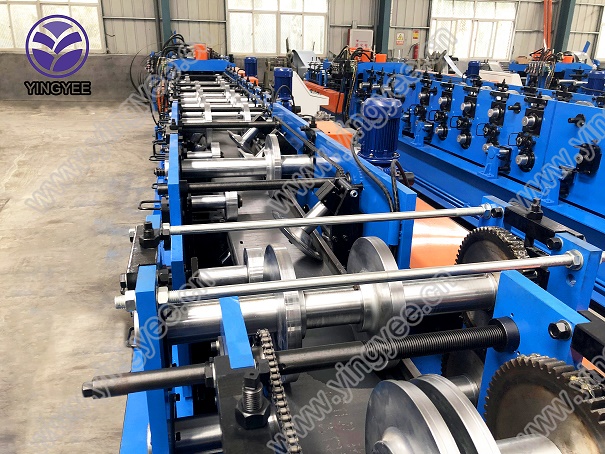
Exploring the Main Furring Roll Forming Machine A Comprehensive Overview
The construction industry has witnessed a significant evolution in the methodologies and technologies employed for creating structures and components. Among these advancements is the innovative main furring roll forming machine, which plays a pivotal role in the production of metal furring channels. These channels are essential for the installation of various applications, including drywall, ceilings, and facades. Understanding the function, benefits, and operational mechanisms of the main furring roll forming machine can provide valuable insights for both industry professionals and enthusiasts.
What is a Main Furring Roll Forming Machine?
A main furring roll forming machine is designed specifically to produce metal furring channels from coiled metal sheets. The process involves feeding a metal strip through a series of rollers that progressively shape the strip into the final desired profile. These profiles are crucial for various construction applications, providing a framework to attach materials such as drywall or plasterboard to walls, thereby creating a smooth, finished surface.
The Role of Furring Channels
Furring channels serve multiple functions in construction. Primarily, they provide space for insulation and electrical wiring while also ensuring that the finished surfaces are flush and level. The use of furring channels allows for the installation of structural elements without directly attaching them to potentially uneven surfaces, such as concrete or brick walls. This flexibility in construction methodology significantly enhances the quality of the finished product.
Advantages of Using a Main Furring Roll Forming Machine
1. High Efficiency and Speed One of the primary advantages of using a main furring roll forming machine is the speed at which it operates. Once configured, these machines can produce a large volume of furring channels in a relatively short time, significantly reducing labor costs and increasing productivity on construction sites.

2. Consistency and Precision The automated nature of roll forming machines ensures that each channel produced is identical, maintaining consistent quality and precision across all components. This consistency is vital for large construction projects where uniformity plays a critical role in the structural integrity of the installation.
3. Versatility Main furring roll forming machines can be customized to produce various sizes and profiles of furring channels, allowing manufacturers to meet diverse client needs. This adaptability is essential for construction firms that may require different specifications based on project demands.
4. Cost-Effectiveness With the high output and low labor requirements associated with these machines, manufacturers can realize significant cost savings, passing these benefits on to construction companies in the form of lower prices. The use of roll forming machines reduces waste by utilizing materials more efficiently, further contributing to cost-effectiveness.
Operating Mechanism
The operation of a main furring roll forming machine involves several key stages
- Feeding The machine begins by feeding a rolled sheet of metal into the system. - Roll Forming As the metal progresses through a series of shaped rollers, it is gradually transformed into the desired furring channel profile. - Cutting Once the channel has been formed to the required length, it is cut using an integrated cutting mechanism. - Stacking The finished channels are then stacked for easy handling and transportation.
Conclusion
In conclusion, the main furring roll forming machine is a crucial piece of equipment in the construction industry, facilitating the efficient production of furring channels that enhance the quality and durability of various structures. Its advantages in terms of efficiency, precision, versatility, and cost-effectiveness make it an invaluable tool for manufacturers and builders alike. As the construction industry continues to evolve, the contribution of advanced machinery such as the main furring roll forming machine will undoubtedly remain significant, paving the way for innovative construction techniques and improved building practices.